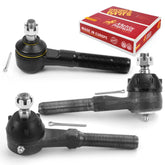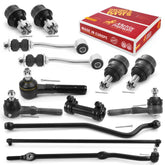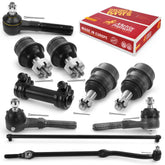The Difference Between Steering Systems: Electric and Hydraulic Steering

Steering is an essential aspect of driving, and it is what allows us to control the direction of our vehicle. However, not all steering systems are created equal. Electric and hydraulic steering are two different car technologies to control the wheels' direction. Electric steering, also known as electric power steering (EPS), uses an electric motor to assist the driver in turning the wheels, while hydraulic steering uses a fluid-based system to do so.
Both have unique benefits and drawbacks; understanding the differences between them is crucial when buying a new car or upgrading your current vehicle. In this blog, we will dive deep into the world of electric and hydraulic steering, explaining the technology behind each one, their advantages and disadvantages, and helping you understand which one might be the best fit for you and your driving needs. Whether you're a car enthusiast, a new driver, or simply someone in the market for a new vehicle, this blog will provide you with all the information you need to make an informed decision.
Electric steering technology was introduced in the early 2000s and has become increasingly popular in vehicles of all types, from small cars to large trucks. The electric motor in EPS systems is controlled by a computer, which uses sensors to detect the driver's steering inputs and adjust the level of assistance accordingly. This allows for precise and consistent steering assistance, which can be especially beneficial for drivers of sports cars or other high-performance vehicles. Additionally, because the electric motor only assists in steering when needed, it does not consume energy when the driver does not need assistance, resulting in improved fuel efficiency.
One of the most significant advantages of electric steering is its improved fuel efficiency. Because the electric motor only assists in steering when needed, it does not consume energy when the driver does not need assistance. This can result in significant fuel savings over time. Additionally, because electric steering does not require a hydraulic pump, it is more compact and lightweight than hydraulic steering, which can further improve fuel efficiency.
Another advantage of electric steering is its increased precision and responsiveness. Because the electric motor can be precisely controlled, it can provide more accurate and consistent steering assistance. This can be especially beneficial for drivers of sports cars or other high-performance vehicles, as it can help them achieve better handling and control.
However, electric steering also has some drawbacks. One of the main disadvantages is that it can be less reliable than hydraulic steering. Because electric steering relies on electronic components, it is more susceptible to failure due to software glitches or hardware failures. Electric steering can be more expensive to repair or replace than hydraulic steering.
Hydraulic steering, on the other hand, uses a fluid-based system to assist the driver in turning the wheels. This technology has been used in vehicles for many decades and is still widely used in many cars and trucks today. The hydraulic system uses a pump driven by the engine to pressurize the steering fluid. The pressurized fluid is then sent to a cylinder connected to the steering rack or box. The cylinder then uses the pressure of the fluid to assist the driver in turning the wheels.
One of the main advantages of hydraulic steering is its reliability. Because hydraulic steering relies on simple mechanical components, it is less susceptible to failure than electric steering. Additionally, because hydraulic steering has been in use for many years, it is a well-established and proven technology that mechanics and repair technicians understand.
Another advantage of hydraulic steering is its ability to provide a more natural and intuitive feel to the driver. Because the fluid-based system reacts to the driver's inputs more gradually and consistently, it can provide a more comfortable and familiar driving experience. The resistance provided by the hydraulic system can also make the driver more aware of the vehicle's movements, which can improve the driving experience.
However, hydraulic steering also has some drawbacks. One of the main disadvantages is its relatively poor fuel efficiency. Because the hydraulic pump is always running and consuming energy, it can result in higher fuel consumption and more significant emissions. Additionally, because hydraulic steering relies on a complex mechanical system, it can be more expensive to repair or replace than electric steering. The system also requires regular maintenance, such as flushing, replacing the fluid, and checking the hoses for leaks.
Ultimately, the choice between the two technologies will depend on your specific needs and preferences as a driver. It is essential to consider the pros and cons of each technology before considering factors such as fuel efficiency, reliability, and driving experience. The best choice will depend on your specific needs and preferences and ultimately help you have a better driving experience.
For more content on your car's steering and suspension systems, make sure to sign up for our Newsletter on the homepage!









